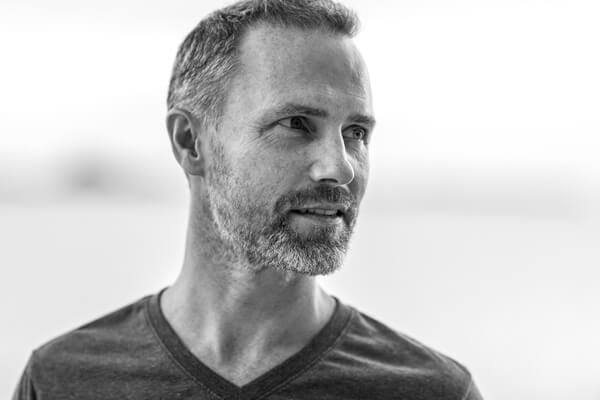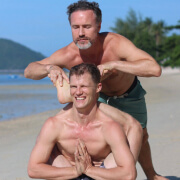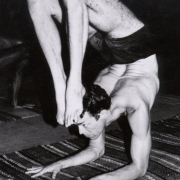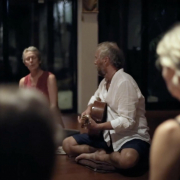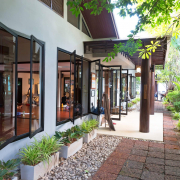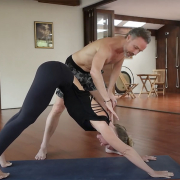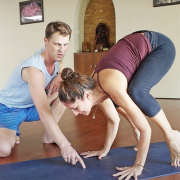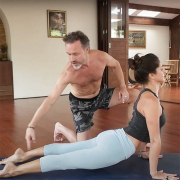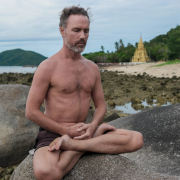 https://samahitaretreat.com/wp-content/uploads/2021/04/SAM_2698-scaled.jpg
1707
2560
Dr. Paul Dallaghan
http://samahitaretreat.com/wp-content/uploads/2024/01/samahita-logo-v2.svg
Dr. Paul Dallaghan2023-06-07 04:54:272024-02-15 09:46:19What is your state of mind? Perhaps yoga has some insight!
https://samahitaretreat.com/wp-content/uploads/2021/04/SAM_2698-scaled.jpg
1707
2560
Dr. Paul Dallaghan
http://samahitaretreat.com/wp-content/uploads/2024/01/samahita-logo-v2.svg
Dr. Paul Dallaghan2023-06-07 04:54:272024-02-15 09:46:19What is your state of mind? Perhaps yoga has some insight!Yoga and Injuries Part Three: Relaxation is vital, Support is key, Breath is essential
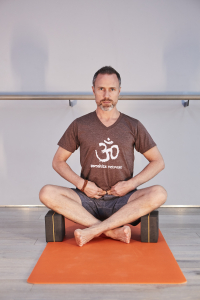
RELAXATION IS MOST OVERLOOKED AND VITAL TO LIFE
The reality is we are in a continuously oppressive, destructive environment. That doesn’t mean to set a negative tone or context; it just means there are numerous forces we have to deal with: environmentally, and through physics and so on. To put yourself in the savasana position requires a complete release of bodily tension, which is not what we allow to happen very much in other moments of our lives whether sitting or standing for example. The big aim is to get a balance of support and appropriate release of bodily tension in other areas. The common default response is to engage the peripheral areas which only serves to increase our tension, waste energy and weaken us, and makes holding your body in an upright position, whether for walking or for yoga asana more difficult, more problematic and therefore makes us definitely more prone to injury. When we go back to the concept of building it structurally from the base up, just like the good engineering with upright columns and cross beams, you are providing a continuous internal support through the pelvis to the spine, which is an automatic support for the viscera; and that support is like a continuous uplifting energy production.
Much like if you see yourself sitting there, you can’t see the degree of activity going on digestively, but it is going on. There is a whole support network that handles that. Now it’s still through spinal nerves that impacts this deeper support, but you’ve trained them to a point that metabolically supports functions more effectively. So that even when I’m sitting silently and still, it meets the environmental demands, (typical gravitational effects), to keep the body in support with freedom – which is the definition of Asana (Sthira sukham, asanam). In this state there is a continuous upward moving force inside, a centered, dynamic current. Good yoga practice awakens it. When that’s working, I can actually relax. I can relax with support; not collapse.
APPROPRIATE BODILY SUPPORT TO REDUCE STRESS AND INCREASE RELAXATION
Without the appropriate support the body, across its structure and inner organs, will experience a collapse, which is stress, an eventual increase of free radicals, causing not just injury but even inflammation rise and lead to disease production. As a personal example from my earlier years in sitting practice, although I have taken good care of my body to avoid the typical injury in asana practice, I had sat for hours and then allowed that support to slip, and though there was no bodily injury, there was a whole depression of activity inside, which led to a mental disturbance in meditation sitting practice and a heavier component in the body. Though I didn’t have to deal with a bad knee for example, I still had to deal with a collapse of pressure and a compromised body, which took about two weeks to settle down. These are not identifiable injuries to ligaments or tendons for example; this is an example of how when support is compromised, nervous functioning can be disturbed.
BREATH CAN IMPACT POSTURE AND BODILY SUPPORT WITH ITS OWN ADDITIONAL EFFECTS ON RELAXATION
It’s not just important to breathe when doing asana, it’s about how you manage the body in terms of breathing. If I initially put my focus on the exhale, a proper exhale is driven or managed by the engagement of the lower abdomen. Now a bad exhale will squeeze the upper abdomen and create stress; this fights with your autonomic nervous system. An exhale is technically parasympathetic. If you’re squeezing the upper abdominal muscles, or if you’re doing a yoga pose and you’re squeezing the body inappropriately, although your intention is to try to do a yoga pose, you’re actually creating an internal environment of confusion. The solar plexus, located at the upper abdomen, is a major second processing site; stress is processed a lot in this area.
The upper abdominal area, specifically the upper triangle part of it, is where we process stress. We do not need to over activate that area when it’s not needed. When the upper triangle is over-activated, then health is compromised. If you are over dominant in your upper triangle, you might be more prone to injury because your internal cocktail is always telling you to: be on alert, be on alert. This influences stress hormones, which compromises your immune system and keeps inflammation higher than it should be. Again, if you look at all non-infectious disease, inflammation is behind it, and mismanagement of stress is behind that. Theoretically your yoga practice should be helping you to better manage the stresses that come to you. But if we don’t understand this, then we will just repeat the same patterns in our yoga practice. This needs to be taken into account in our yoga practice on a functional level.
The lower abdomen is the door through which to get inside. Many people have been doing yoga for years and continually following their hands, or following the dive. If you come to yoga and repeatedly dive without an “open heart” but rather a pinch in that area, you are unwittingly, unknowingly, and unwisely adding to your stress. We need to respect the functioning of the nervous system, across both the somatic and the autonomic nervous systems; and this shows up when you sit. We need to learn how to manage the breath from our lower abdomen, how to set up the posture and provide spinal support, thereby giving us the environment for the inhale to flow. That is the link. The exhale informs the asana, and the asana informs, or gives you, the inhale, which should lead to a good injury prevention state.
Dr. Paul Dallaghan’s expertise with breathwork, body and meditative practices comes from three sources: (1) three decades of daily dedicated practice and teaching these techniques; (2) uniquely acknowledged in the Yoga tradition by the title of “Master Yogi-Prānācharya (expert in breath)”, following an immersion in the original culture through one-on-one direct training in practice and study of ancient texts; (3) a PhD in doctoral scientific research at a leading US university (Emory) covering both the tradition and science of yoga and breath practices in terms of stress, health and aging. As a result, Paul occupies a unique space to impart genuine teaching and science on the breath, body, and meditative practices, seen as a Teacher-of-teachers and identified to carry on the tradition of Pranayama. His sincere and ongoing role is to teach, write and research, to help put out experienced and authentic information on these areas of how we live, breathe and be, to help people improve their mental and physical health, and live more fulfilling lives.
For more on his background see his bio
More from the Samahita Blog
